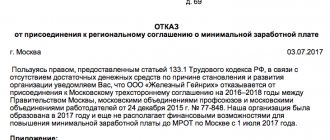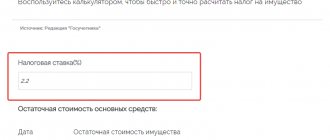What are the rates?
According to Article 164 of the Tax Code, the sale of goods, services or work can be taxed at three different rates. Here's to :
- 0%;
- 10%;
- 18%.
The size of the rate depends on exactly what goods, services or work and within the framework of what operation a particular businessman or company sells. Let's take a closer look at each rate: how much percent of VAT is in 2021 and for what.
Also see "VAT rates in 2021".
There have been quite a lot of VAT changes in 2021. However, the rates for this tax were not affected. For more information, see “VAT changes from 2021”
VAT rates in the Russian Federation by year after the adoption of the Tax Code of the Russian Federation
The entry into force of the Tax Code of the Russian Federation in 2001 did not change the tax rate; it was also 20% in the basic value and 10% in the preferential value.
In the process of reforming the tax system in 2004, the basic rate was reduced to 18%. The preferential rate remained at the same level, but printed materials and some types of medical goods were added to the list of goods covered by it. In addition, for some categories of goods there is a zero tax rate. For example, it is used when exporting or re-exporting goods from the territory of the Russian Federation.
In 2021, the VAT rate was increased to 20%, while the reduced rate remained at the same level.
Read also: VAT rates in 2021 - table
Zero percent
There are a number of industries that in Russia are not subject to value added tax at all. Sometimes, in order to follow the spirit of the Tax Code, they are given zero VAT. These productions are specific. These include, for example, the space industry.
Also, zero VAT is due to those companies that produce their goods for sale abroad. This rule is spelled out in the first paragraph of Article 164 of the Tax Code. True, in order to take advantage of this right, manufacturers (suppliers to foreign markets) must document that their goods are for export only. To do this, according to Article 165, the company must submit the appropriate set of documents to the Federal Tax Service.
And another case when you can count on zero VAT is the provision of services for the international transportation of various goods, luggage or passengers. That is, transport companies usually do not pay this tax. They have slightly different forms of taxation.
These benefits are quite stable, so companies in these areas do not worry about the amount of VAT for them.
Some buyers became tax agents
First of all, the latest news about changes to VAT in 2021 was brought by Federal Law No. 335-FZ of November 27, 2017 (hereinafter referred to as Law No. 335-FZ). According to it, from January 1, purchasers of a number of goods must perform the duties of tax agents for VAT. These changes apply to the VAT on scrap metal from 2021. And also (new clause 8 of Article 161 of the Tax Code of the Russian Federation):
- ferrous metal and non-ferrous metal waste;
- raw animal skins;
- secondary aluminum and its alloys.
Sales of these types of goods in Russia are no longer exempt from value added tax. That is, the buyer, as a tax agent, calculates VAT. An exception is made only for ordinary individuals who do not have individual entrepreneur status.
Let us recall that tax agents must calculate and transfer to the treasury the appropriate amount of VAT, regardless of whether they are responsible for paying this tax.
Tax agents on the general system (OSN), together with the tax calculation, can declare the corresponding deduction. That is, in fact, do not transfer money to the treasury.
Also see “How to calculate VAT”.
Ten percent
The reduced VAT rate of 10 percent applies only to certain groups of goods. Their list can be found in Article 164 (clause 2) of the Tax Code, as well as in the following decrees of the Government of the Russian Federation:
- No. 688 dated September 15, 2008;
- No. 908 dated December 31, 2004;
- No. 41 dated January 23, 2003.
First of all, such products for which VAT is 10 percent include food and children's goods. True, not all products, but only those that are included in the main food basket. For example, milk and bread will be subject to reduced taxes. But red fish meat will already be sold at full rate.
Sellers of medicines and various medical supplies can also count on 10% VAT. True, a particularly important part of them, by law, may generally be exempt from taxes. The rest is at a reduced rate.
But in any case, when one wonders how much VAT is in Russia and whether it is possible to pay at a reduced rate, one must be guided by the listed acts of the Government. VAT 10% applies only to those types of goods that are expressly indicated in them. In other cases, full VAT goes to the budget.
What percentage of VAT is for various transactions
An exhaustive list of transactions for which the VAT percentage is 0 is indicated in clause 1 of Art. 164 Tax Code of the Russian Federation. Thus, zero percent VAT in 2018 was established for export operations, transportation of goods along an international route, in the field of space services, when conducting activities with precious metals, in the construction of ships and for some transport services. Starting from January 2015 and until the end of 2029 (clause 5 of Article 3 of the Law of the Russian Federation dated 04/06/2015 No. 83-FZ)), railway transportation of passengers within suburban routes is also subject to a zero VAT rate.
From 01/01/2018, the application of a zero VAT rate is possible for the re-export of goods (Article 1 of the law of November 27, 2017 No. 350-FZ), as well as for domestic air transportation of passengers and baggage, if the point of departure or destination is located in the territory of the Kaliningrad region (sub. 4.2 clause 1 article 164 of the Tax Code of the Russian Federation, clause 1 article 1 of the law of November 27, 2017 No. 353-F).
From 01/01/2018 in relation to operations provided for in clause 7 of Art. 164 of the Tax Code of the Russian Federation, taxpayers have the right to refuse to use the 0% rate and calculate tax at a rate of 18 and (or) 10% (clauses 2, 3, 7 of Article 164 of the Tax Code of the Russian Federation). In order to take advantage of this opportunity, you need to submit an application to the INFS before the 1st day of the quarter in which it is planned to abandon the use of the 0% rate. It should be borne in mind that refusal is possible only in relation to all operations simultaneously and for a period of at least 12 months.
How much is VAT on the sale of periodicals, meat, vegetable oil and other food products, as well as a number of medical goods and products for children? The answer to this question is contained in paragraph 2 of Art. 164 Tax Code of the Russian Federation. All these items, as well as a number of others, are listed in this paragraph as goods and services subject to VAT at a rate of 10%.
The rate (10%) for the provision of services for leasing with the right to purchase breeding livestock (poultry) is valid until the end of 2021.
When providing services for the transportation of baggage and passengers by air within Russia, if the point of departure (or arrival) is not the airport of Crimea or the city of Sevastopol, a VAT rate of 10% is applied until 01/01/2021 (subclause 6, clause 2, article 164 of the Tax Code of the Russian Federation, Clause 6, Article 3 of Law dated 04/06/2015 No. 83-FZ). If the point of departure (arrival) is an airport on the territory of Crimea and the city of Sevastopol, then the VAT rate of 0% is valid only until the end of 2021 (subclause 4.1, clause 1, article 164 of the Tax Code of the Russian Federation, clause 4, article 2 of the law dated 04.06 .2014 No. 151-FZ).
For information on the application of VAT rates when providing transport services, see the article “What is the procedure for assessing VAT on transport services?”
What lists of medical goods for the application of the 10% VAT rate are applied from January 25, 2018, read in the material “New list of medical goods for the 10% VAT rate.”
For what VAT rate to apply for medicines for which the registration certificate has expired, read the article “At what rate to pay VAT if the registration certificate for a medicine has expired?”
Information about what is included in the list of transactions subject to a 10% tax is contained in the article “What is included in the list of goods subject to VAT at a rate of 10%?” .
But still, most business transactions are taxed at a rate of 18% - this is stated in paragraph 3 of Art. 164 Tax Code of the Russian Federation. So the answer to the standard question, how much VAT is in Russia, is usually the following: 18%.
For information on the specifics of applying rates of 18 or 18/118% in various cases, read the article “What is the difference and when to apply the VAT rate of 18 and 18/118?” .
Settlement rate
When answering the question, VAT is how much, sometimes in addition to the standard rates (0, 10 and 18%) they indicate the so-called estimated tax rate. It is calculated using the formula 10/110 and 18/118. This is determined by Article 164 (clause 4) of the Tax Code.
A similar calculation is made when it is necessary to allocate VAT. That is, both of these values show exactly how much tax is included in the cost of the product or transaction. This approach to calculations is used, for example, if the seller receives an advance payment for goods that he only promises to deliver in the future.
Also see “How to allocate VAT”.
How to pay
For all types of VAT (10% or 18%) there is a single tax payment system. Thus, those who sell goods or conduct other types of operations on the territory of the Russian Federation must report every quarter. Moreover, payments occur not once every three months, but monthly at 1/3 of the VAT amount. And it is important to deposit money into the budget no later than the 25th of each month.
Those who import goods into Russia from EAEU countries report to the tax office once. In this case, the tax is paid no later than the 20th day of the next month, after the goods have been imported into our country.
Right to refuse zero VAT on exports
It has become possible to abandon the zero VAT rate for exports and related services - this is another new thing in the payment of VAT in 2021 thanks to Law No. 350-FZ (new edition of Article 164 of the Tax Code of the Russian Federation).
These changes give exporters the right to refuse the 0% VAT rate:
- directly when exporting goods;
- their transportation.
To do this, you need to submit a corresponding application to the tax office. The deadline is until the 1st day of the quarter from which the company wants to deduct VAT at a rate of 10 or 18%.
And you can’t:
- apply different rates to a product even when purchased by different people;
- selectively waive zero VAT on specific transactions.
In addition, if you refuse zero VAT, you can return to it only after 1 year.
The general meaning of these VAT amendments in 2021 is as follows:
- Export zero VAT is not easy to apply, since you need to prove your right to such a rate, otherwise the tax will have to be paid in the amount of 18% for the entire chain of counterparties;
- You can deduct VAT on invoices with VAT 18, not 0%.
VAT: what percentage in 2018
We hasten to please you: tax rates for 2021 have not changed compared to the previous period. However, the authorities for air transportation to the Crimean peninsula are currently keeping the VAT tax rate at 0 percent.
The following figure shows how much VAT is in 2021, according to the Russian Tax Service.
Read also
19.08.2016
Rules for deducting input VAT by subsidy recipients
Entities that receive subsidies from the budget must calculate VAT payable in a new way from January 1, 2018. In accordance with paragraph 2.1 of Article 170 of the Tax Code of the Russian Federation, they can no longer deduct VAT on goods, works and services purchased with these funds. The rule also applies to cases where the authorized capital of the organization is increased at the expense of these funds.
The obligation of subjects receiving subsidies to keep separate records of tax amounts . In this case, VAT, which is not deductible, can be included in income tax expenses.







